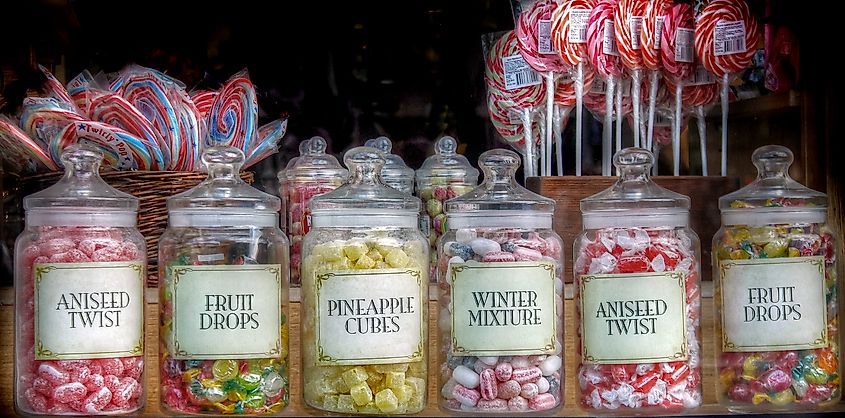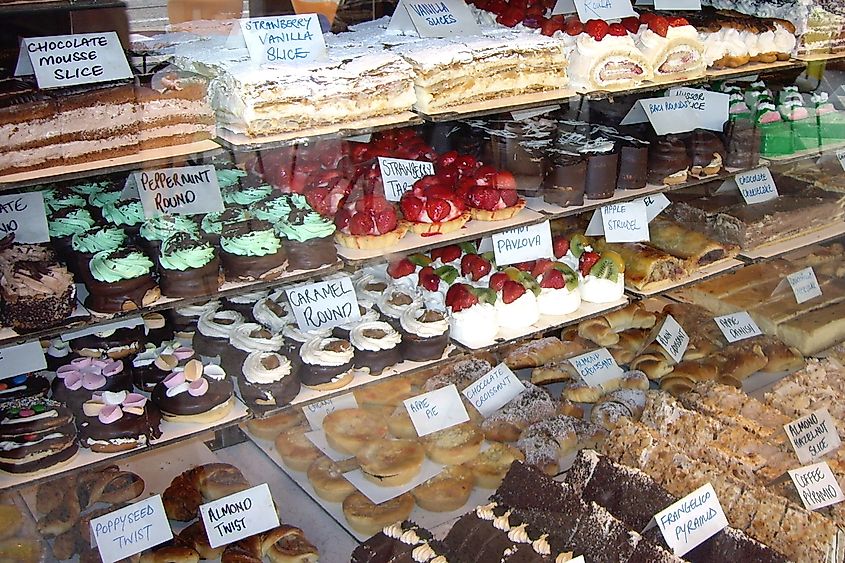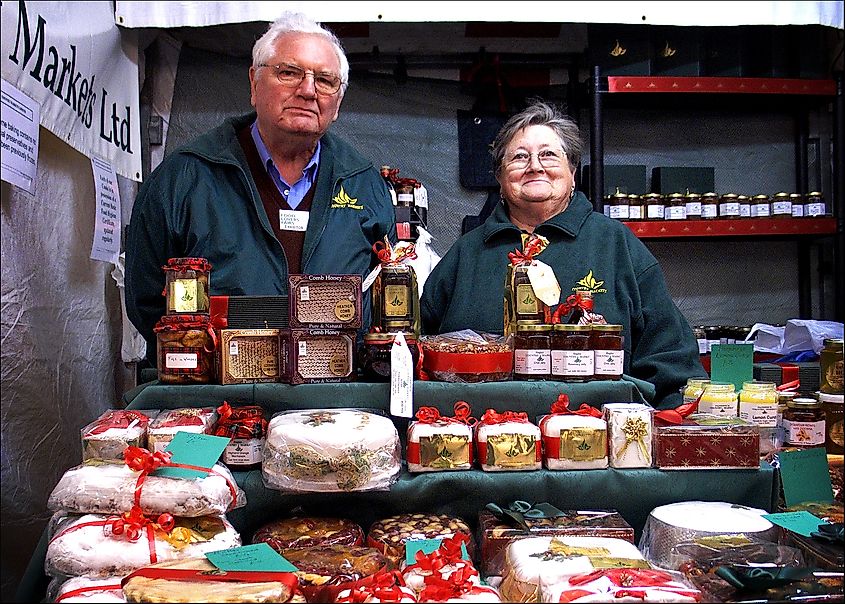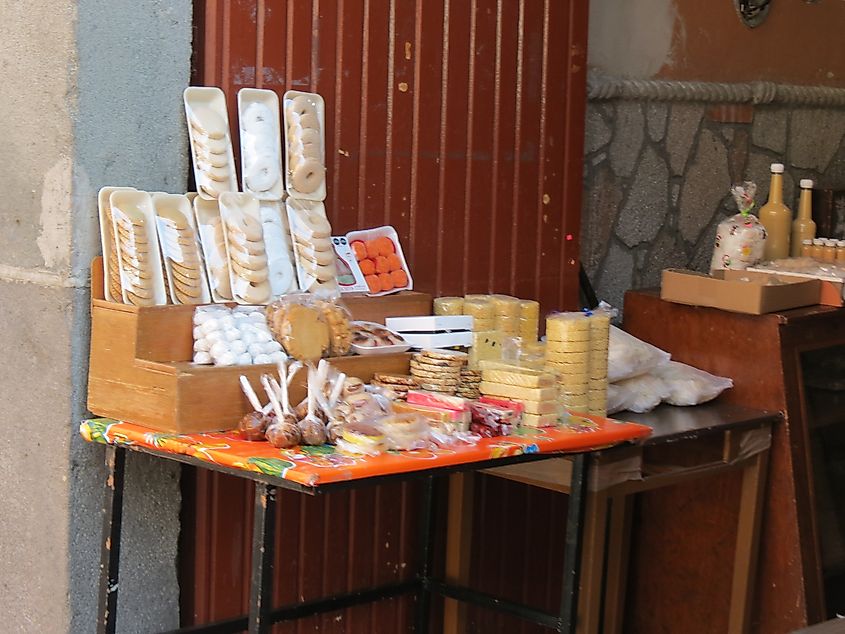
Countries That Consume The Most Sugar
Sugar consumption over the past few decades has been on the rise. An estimated 177.33 million metric tons of sugar will be consumed across the globe in 2025, a 15% increase from 2011. Due to an improvement in agricultural technology and a rise in global trade, sugar has become cheaper and more available than ever before. Of this global consumption, ten countries stand out as the highest consumers, with the United States, Germany, and the Netherlands leading as the top three in average annual sugar intake per person.
Countries with the Highest Sugar Consumption Per Person
| Rank | Country | Average Individual Sugar Consumption (in grams) |
|---|---|---|
| 1 | United States | 126.4 |
| 2 | Germany | 102.9 |
| 3 | Netherlands | 102.5 |
| 4 | Ireland | 96.7 |
| 5 | Australia | 95.6 |
| 6 | Belgium | 95 |
| 7 | United Kingdom | 93.2 |
| 8 | Mexico | 92.5 |
| 9 | Finland | 91.5 |
| 10 | Canada | 89.1 |
1. United States - 126.4 Grams of Sugar

With each American consuming a daily average of 126.4 grams of sugar, the United States is by far the largest consumer of sugar in the world. The culprit for this high sugar intake largely relates to the quality of food, with around 60% of the US diet consisting of processed foods on average. These processed foods typically contain more calories, fat, salt, and added sugars. Additionally, the United States leads in snacking, with snacks making up about a fourth of daily calorie intake and a third of added sugar intake, significantly contributing to the nation's high sugar consumption.
2. Germany - 102.9 Grams of Sugar

With an average daily sugar intake of about 102.9 grams, Germany ranks as the second-highest sugar-consuming country. Much of this sugar intake comes from desserts, with nearly half of Germans regularly snacking on desserts and 60% reporting typically ordering desserts when they eat out in restaurants. In fact, 36% of added sugar intake in Germany comes from confectionary goods, followed by juices and nectars at 26%, and soft drinks at 12%. With Germans regularly exceeding the daily recommended sugar intake, the government has introduced initiatives to curb the high consumption.
3. The Netherlands - 102.5 Grams of Sugar

With a daily average sugar consumption of 102.5 grams per person, the Netherlands ranks just below Germany and is the third largest consumer of sugar. Much like in the United States, a significant portion of this intake comes from processed foods, including sauces, soups, and herb mix packets. About 75% of Dutch cooks regularly use these flavor enhancers, yet most rarely check the nutrition labels. Consequently, the Dutch consume nearly twice the amount of sugar they believe they do, and around 1.1 million currently suffer from type 2 diabetes.
4. Ireland - 96.7 Grams of Sugar

Ireland is the fourth biggest consumer of sugar, with the average Irish resident consuming 96.7 grams of sugar per day. One of the biggest concerns regarding sugar intake in the country is sugar-sweetened drinks. Consumers in Ireland purchase over 411 million liters of sugary drinks annually, totaling around 200 cans per person. Lower socioeconomic groups consume more sugary drinks than those in higher classes, with adolescents from lower-income backgrounds drinking nearly three times as many sweetened beverages as those from the highest economic class.
5. Australia - 95.6 Grams of Sugar

The average Australian consumer eats around 95.6 grams of sugar every day, making Australia the fifth largest consumer of sugar worldwide. Over half of Australians consume more than WHO’s recommended daily sugar intake, with adolescents and young adults consuming more than any other age group. 81% of added sugars in the Australian diet come from processed, nutrient-poor foods and beverages, with sugar-sweetened beverages being one of the largest culprits. However, the consumption of sugary drinks has dropped in Australia, from 43% in 1995 to about 34% in 2011 & 2012.
6. Belgium - 95 Grams of Sugar

Belgium consumes just slightly less sugar than Australia, with the average Belgium resident consuming 95 grams of sugar daily. Sugar consumption in Belgium is largely due to confectionary goods and sugar-sweetened drinks. Between 2010 and 2015, the confectionery industry in Belgium grew by nearly 8% and continues to experience growth today. Additionally, one out of five Belgians consumes at least one sugary drink per day, with men, on average, consuming more sugar-sweetened beverages than women. People with a tertiary education level in Belgium are also less likely to consume sugary drinks daily.
7. United Kingdom - 93.2 Grams of Sugar

The average United Kingdom resident consumes a daily average of 93.2 grams of sugar, making it the world’s seventh largest consumer of sugar. Much of the high sugar intake in the country is due to hidden sugar in processed foods. Despite the British government’s recommendation to limit added sugar to 5% of daily intake, the average Briton consumes between 9% and 12.5%—nearly double the recommended amount. Young people in the country are especially susceptible to an overconsumption of sugar, with 10% of adults between the ages of 18 and 34 consuming over four sugary snacks every day.
8. Mexico - 92.5 Grams of Sugar

Consuming an average of 92.5 grams of sugar per person, Mexico is the world’s eighth biggest consumer of sugar. Much of Mexico’s excessive sugar consumption comes from sugary drinks, having earned the nickname the “Coca-Cola Nation” due to the product’s brand being advertised across restaurants, small shops, and even amusement parks. As a result, for several years in a row, Mexico has had some of the highest soda intake per person in the world. Individuals from rural, lower socioeconomic classes, and indigenous groups are among the most likely to excessively consume sugar due to less education regarding the negative effects.
9. Finland - 91.5 Grams of Sugar

The average Finn consumes about 91.5 grams of sugar daily, ranking Finland as the ninth largest sugar consumer worldwide. About 20% of sugar intake in Finland is from sugary drinks. However, other foods high in sugar remain a relevant concern to Finnish citizens as well. Although the Finnish government currently has a tax on sugary drinks, about 60% of Finns support the implementation of a sugar tax on all foods that have an excessively high sugar content as a way to target the overconsumption of sugar and obesity.
10. Canada - 89.1 Grams of Sugar

Although Canadians consume about two-thirds the amount of sugar that Americans do, they still continue to be one of the highest consumers of sugar in the world. About two out of three Canadians consume more than the daily recommended limit of sugar, resulting in an increase in chronic health problems across the population. A study from the University of Alberta estimates that excessive sugar consumption costs the country around $5 billion annually, driven by an increase in healthcare expenses associated with 16 chronic diseases, such as diabetes and cardiovascular diseases.
Final Thoughts
With the improvement of technology and an increase in global trade, it has become increasingly easy to acquire sugary foods and beverages. However, many countries are fighting this uptick in sugar consumption by raising awareness about its dangers and implementing educational programs and taxes to encourage residents to reduce their intake. With the WHO warning of a rise in chronic diseases, the actions countries take to regulate sugar intake will significantly impact global health outcomes.











